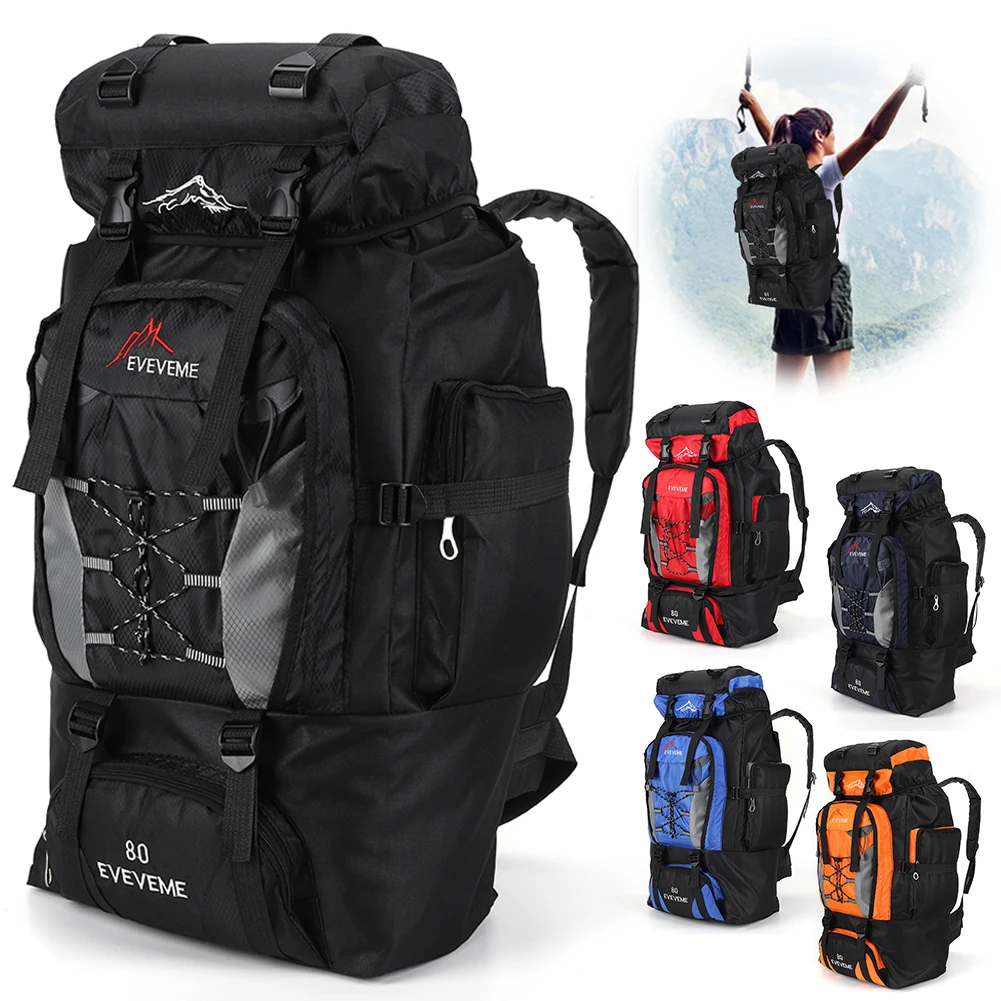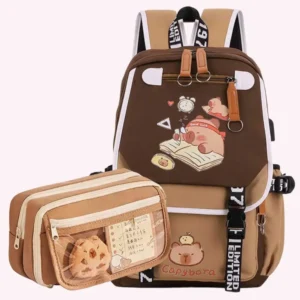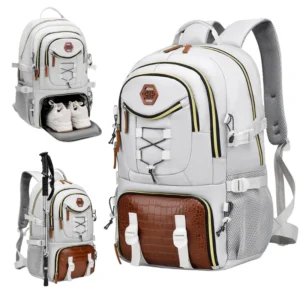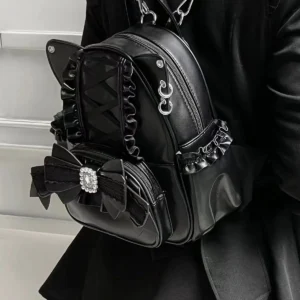Introduction
Roll top backpacks represent a perfect blend of functionality and style, offering a unique closure system that’s gaining popularity among urban commuters and outdoor enthusiasts alike. Unlike traditional backpacks with standard zippers, roll tops feature a distinctive top section that rolls down and secures with buckles or straps, creating a waterproof seal that protects your belongings.
These versatile packs have captured attention for good reason—they offer adjustable capacity, allowing you to carry more or less as needed, superior protection against the elements, and enhanced security compared to zippered alternatives. Whether you’re cycling through rainy city streets, heading on a weekend adventure, or simply looking for a dependable everyday carry option, roll top backpacks deliver impressive versatility.
In this comprehensive guide, we’ll walk you through the essential features to consider when purchasing a roll top backpack. Rather than following passing trends, we’ll focus on matching specific features to your personal needs and usage scenarios. Understanding proper leather conditioning and waterproofing techniques provides a solid foundation for evaluating many aspects of these practical bags.
From materials and weather resistance to comfort features and organization systems, we’ll cover everything you need to make an informed decision about your next roll top leather backpack purchase.
Understanding the Roll-Top Mechanism
The roll-top closure system represents the defining feature of these distinctive backpacks. It works through a surprisingly simple yet effective mechanism—the top portion of the bag extends upward, allowing you to fold it over itself multiple times before securing it with buckles, hooks, straps, or magnetic closures. This creates a tight seal that keeps the elements out while keeping your belongings securely inside.
Several securing mechanisms exist across different roll-top models:
- Buckle systems – Traditional and reliable, offering strong securing points
- Hook closures – Quick to operate and streamlined in appearance
- Strap systems – Allow for variable compression based on load size
- Magnetic closures – Provide the fastest access with modern convenience
The roll-top design offers several significant advantages over traditional zippered backpacks:
- Superior weather protection without relying on expensive waterproof zippers that can fail
- Expandable capacity that adapts to your changing needs—carry less during daily commutes or expand for weekend trips
- Enhanced security through a more complex opening procedure that deters quick-access theft
- Customizable compression that stabilizes loads of various sizes for better carrying comfort
- Cleaner aesthetic with fewer external components that can break or wear out over time
The physics behind roll-top waterproofing is straightforward but effective—fewer entry points mean fewer opportunities for moisture to penetrate. When properly rolled and secured, these closures create an impressively watertight barrier. Capacity flexibility represents another key benefit, with many packs offering significant range—a 20L pack might expand to 28L when the top is only folded once rather than three times.
Understanding different roll top backpack closures helps you select the mechanism that best suits your needs, whether prioritizing weather protection, quick access, or aesthetic preferences.
Essential Materials & Durability Features
The materials used in roll-top backpacks significantly impact their durability, weather resistance, weight, and overall performance. Here’s what to look for in quality construction:
Common Materials and Their Properties:
| Material | Durability | Water Resistance | Weight | Aesthetic Appeal |
|---|---|---|---|---|
| Cordura Nylon | Excellent | Good to Excellent | Medium | Technical/Modern |
| Ripstop Nylon | Very Good | Good | Light | Technical/Outdoor |
| Ballistic Nylon | Excellent | Good | Heavy | Technical/Professional |
| Polyester | Good | Moderate | Light | Casual/Versatile |
| Tarpaulin/PVC | Excellent | Excellent | Heavy | Urban/Technical |
| Waxed Canvas | Very Good | Very Good | Heavy | Heritage/Vintage |
| Recycled Fabrics | Variable | Variable | Variable | Eco-conscious |
When evaluating material quality, pay attention to denier ratings—higher numbers (like 1000D versus 500D) generally indicate greater durability and thickness, though they may add weight. For roll-top backpacks that will face rough conditions, look for higher denier ratings in high-abrasion areas.
Critical construction elements that signal quality craftsmanship include:
- Reinforced stitching patterns at stress points like shoulder strap attachments and handle bases
- Quality hardware that won’t fail—look for metal (not plastic) buckles, robust D-rings, and sturdy attachment points
- Bottom panel reinforcement with double layers or tougher materials to resist wear when setting the pack down
- Seam construction that minimizes water entry points—welded seams offer superior waterproofing to stitched ones
When shopping online, assess material quality by looking for detailed specifications, close-up photos of stitching and hardware, and reviews that specifically mention durability over time. Brands that transparently discuss their material choices and construction methods typically produce higher-quality products.
Understanding waterproof leather backpack features can provide valuable insights even when considering synthetic options, as many waterproofing principles remain consistent across materials. Similarly, familiarity with quality leather backpack indicators helps develop an eye for craftsmanship that applies to all premium backpacks.
Weather Protection & Waterproofing
One of the primary advantages of roll-top backpacks is their superior weather protection. However, not all roll tops offer the same level of protection. Understanding the distinction between water-resistant and fully waterproof bags is crucial:
Water-resistant backpacks can handle light rain and brief exposure to moisture but will eventually allow water to penetrate during sustained downpours.
Waterproof backpacks utilize specialized materials and construction techniques to keep contents dry even during heavy, prolonged rainfall or brief submersion.
Beyond the base material, several elements contribute to a roll-top backpack’s weather protection capabilities:
Seam treatment – Seams represent vulnerable points where water can penetrate. Look for taped, welded, or sealed seams that prevent moisture ingress.
External pocket protection – Even if the main compartment is waterproof, external pockets may not be. Waterproof zippers or protected pocket designs help maintain overall water resistance.
Base construction – The bottom of the backpack frequently contacts wet surfaces. Reinforced, waterproof base panels prevent water absorption from below.
Inner liners – Some premium waterproof roll tops feature removable dry bag liners for double protection of sensitive items.
Roll-top technique – The effectiveness of the roll-top closure depends partly on proper technique—at least 3-4 rolls are typically needed for maximum water protection.
Waterproofing treatments like Durable Water Repellent (DWR) coatings enhance weather resistance but require periodic reapplication. When manufacturers claim waterproofing, look for specific ratings—many use a water column test measured in millimeters (mm), with higher numbers indicating better waterproofing (10,000mm or higher is considered highly waterproof).
For those particularly concerned about protecting leather goods from the elements, learning proper leather bag waterproofing techniques can extend the life of your investment. For travelers seeking dependable protection for their belongings, leather travel backpacks with roll-top designs offer both style and weather resistance.
Comfort & Ergonomics for Daily Use
Even the most feature-rich roll-top backpack will go unused if it’s uncomfortable to wear. Comfort becomes especially crucial for daily commuters or travelers who carry their packs for extended periods. Here are the key comfort and ergonomic features to evaluate:
Shoulder Strap Design
- Padding density and distribution – Look for padding that’s firm enough to distribute weight but soft enough to conform to your shoulder shape
- Width and contour – Wider straps spread pressure more evenly; S-curved straps better fit body contours
- Adjustment range – Ensure straps can adjust to your torso length for proper weight distribution
- Material quality – Breathable, moisture-wicking materials prevent sweat buildup during extended wear
Back Panel Construction
- Padding systems – Multi-density foam provides targeted support where needed
- Ventilation channels – Air channels or mesh panels reduce back sweat, especially important for bicycle commuters
- Support structures – Internal frame sheets or stay systems help distribute weight and prevent the pack from collapsing inward
Load Distribution Systems
- Sternum straps – These small but vital straps prevent shoulder straps from sliding outward and help distribute weight across your chest
- Hip belts – For larger packs (25L+), even simple webbing hip belts improve stability and comfort
- Load lifter straps – On larger models, these top straps pull the pack’s weight closer to your back for better balance
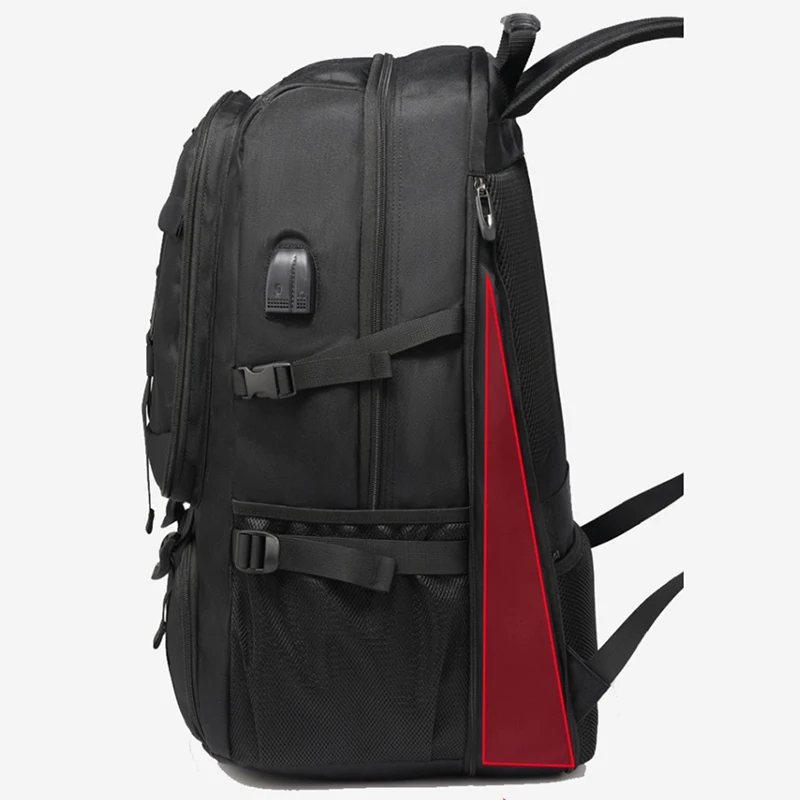
The ideal weight for a daily carry backpack depends on your needs, but generally, lighter is better—around 2-3 pounds empty allows reasonable comfort even when fully loaded. Remember that more features often mean more weight, so prioritize those you’ll actually use.
When evaluating fit, consider your torso length rather than overall height. The pack should sit comfortably on your back without extending above your shoulders or sagging below your lower back. Many users overlook proper fitting, but it significantly impacts long-term comfort and posture.
Organization & Accessibility Solutions
The roll-top design prioritizes weather protection and expandability but traditionally sacrifices quick access. Modern roll tops address this limitation with innovative organization and accessibility features:
Main Compartment Access Options
- Side-access zippers allow retrieval of items without opening the roll top
- Clamshell/panel openings in hybrid designs provide wide access for packing and organization
- Quick-access external pockets balance protection with convenience for frequently-used items
Tech Protection Features
- Dedicated laptop compartments with suspended design keep devices elevated from the ground upon impact
- Padded tablet sleeves protect screens from pressure damage
- Cable management solutions prevent tangling and organize charging accessories
- Quick-access pockets with soft lining protect phones and sunglasses
Internal Organization Systems
- Fixed dividers create permanent compartments for consistent organization
- Modular systems with removable dividers or pouches allow customization based on daily needs
- Admin panels with pen slots, key hooks, and small pockets organize daily essentials
- Color-coded sections help quickly identify contents in low-light conditions
External Storage Options
- Secure water bottle pockets with elastic retention or zippered closure
- Quick-access front or side pockets for items needed without opening the main compartment
- Hidden security pockets positioned against your back for valuables
- Compression straps that double as attachment points for bulky items
When evaluating organization features, consider your typical daily carry items and how frequently you need to access them. A well-designed roll top balances protection with reasonable accessibility. The best organization systems remain functional even when the pack is fully loaded—look for reviews that specifically mention usability when the bag is packed.
Proper leather maintenance for commuters ensures that organizational features like pockets and dividers maintain their shape and function over time, particularly important for those using their roll-top backpacks daily.
Size Considerations & Capacity Management
Roll-top backpacks offer unique advantages in capacity management thanks to their expandable design. Understanding size categories helps match your pack to your needs:
Standard Capacity Categories
- Compact daily carry (15-22L) – Ideal for minimalist everyday carry with essentials like a small laptop, light layer, lunch, and personal items
- Standard commuter size (20-30L) – Accommodates work needs plus gym clothes or groceries on the way home
- Large capacity for travel/outdoor (30L+) – Suitable for overnight trips, weekend travel, or gear-intensive activities
The expandable nature of roll tops provides flexibility within these categories—a 25L roll top might compress to 20L for daily use but expand to 30L+ when needed for grocery runs or overnight trips. This adaptability represents one of the design’s greatest advantages.
When considering physical dimensions, remember that roll tops often appear larger than their actual capacity due to the extended collar needed for rolling. Key compatibility considerations include:
- Airline carry-on limits – Most airlines restrict carry-ons to around 22” × 14” × 9” (45 linear inches total)
- Under-seat storage – Typically requires dimensions under 17” × 10” × 9”
- Public transit compatibility – Narrower designs navigate crowded buses and trains more easily
- Workplace storage – Consider whether the pack needs to fit in a locker or under a desk
For those needing substantial capacity without sacrificing style, large leather backpacks with roll-top designs offer elegant solutions that adapt to varying load requirements.
Security Features for Urban Environments
Roll-top backpacks provide inherent security advantages through their closure system, which takes longer to open than a simple zipper. This deters opportunistic theft in crowded urban environments. Beyond this basic benefit, consider these additional security features:
- Hidden pockets and RFID protection – Concealed compartments against your back protect wallets and passports; RFID blocking material shields credit cards and passports from electronic scanning
- Lockable zippers on external compartments secure valuable quick-access items
- Cut-resistant materials in the bottom and sides protect against slash-and-grab theft attempts
- Attachment points for locks or security cables when leaving your pack temporarily
The ideal security setup balances protection with convenient access—excessive security features can make daily use frustrating. For urban commuters, subtle security elements that don’t advertise their presence provide the best balance.
Consider your typical environments when evaluating security needs. High-risk areas like crowded public transportation, tourist destinations, or busy city centers warrant stronger security features. More familiar or controlled environments might prioritize accessibility over maximum security.
Aesthetic Design & Style Considerations
While functionality remains paramount, the aesthetic appeal of your roll-top backpack matters—it’s something you’ll wear daily, essentially becoming part of your personal style. Modern roll-top designs fall into several distinct style categories:
- Minimalist urban designs feature clean lines, limited external features, and monochromatic color schemes that pair well with professional or casual attire
- Technical outdoor aesthetics emphasize visible functional elements like attachment points, reinforced panels, and technical materials
- Heritage/classic styling incorporates traditional materials like waxed canvas and leather with brass or antiqued hardware for timeless appeal
- Crossover/hybrid approaches blend elements from multiple styles for versatile visual appeal
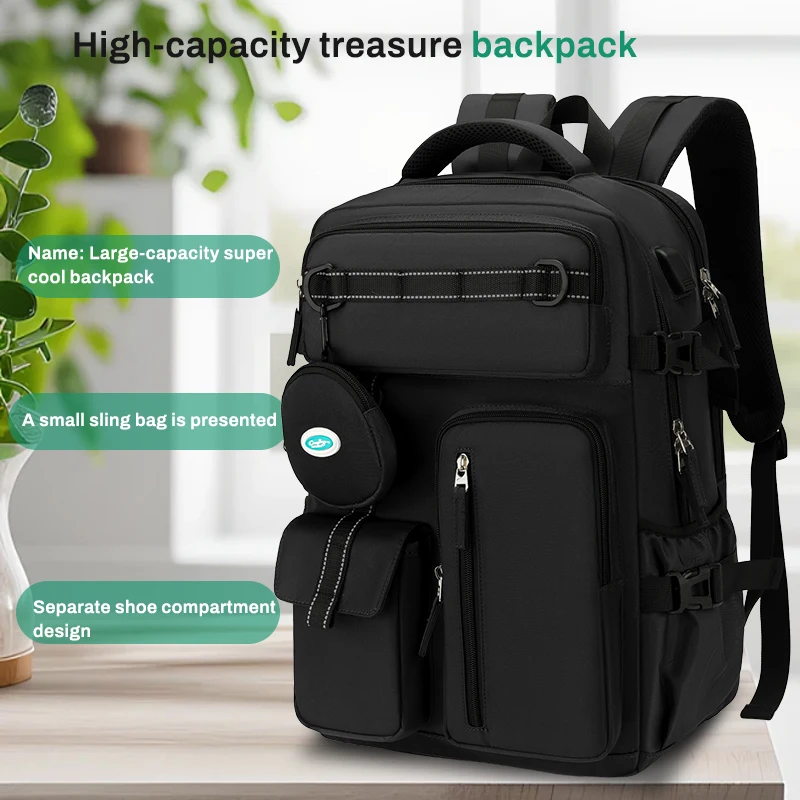
When evaluating aesthetics, consider how functional elements support or detract from the design. For instance, reflective elements for visibility can be integrated as subtle design accents rather than obvious safety features. Similarly, waterproof materials can offer distinctive texture and sheen that enhance visual appeal while serving practical purposes.
Color selection involves both style and practical considerations—darker colors hide dirt and wear better but may make it harder to find items inside your pack. Brighter colors or distinctive patterns make your bag easily identifiable but may show wear more obviously.
For those who appreciate classic aesthetics with modern functionality, vintage leather backpacks with roll-top elements offer an appealing blend of timeless style and contemporary performance.
Specialized Features for Specific Activities
While all roll-top backpacks share core design elements, specialized features cater to specific activities and lifestyles. Identifying these can significantly enhance your experience:
Commuter-Specific Features
- Bike light attachment points positioned for maximum visibility
- Reflective elements integrated into straps and panels for low-light safety
- Helmet carry systems that secure bulky cycling helmets when off the bike
- Luggage pass-through sleeves that slide over suitcase handles for easier airport navigation
Travel-Oriented Features
- TSA-friendly laptop access allows device removal without unpacking the entire bag
- Passport/document organization with secure, easily-accessible pockets
- Luggage handle pass-through for attaching to rolling luggage
- Compression systems that adapt to varying loads throughout a trip
Outdoor Adventure Features
- Hydration reservoir compatibility with internal sleeves and tube ports
- External attachment points for securing gear, tools, or equipment
- Tool organization systems for specialized outdoor equipment
- Trekking pole attachments that secure poles when not in use
14 Inch Leather Laptop Backpack, Brown Leather Backpack, Men's Leather Backpack, Vintage Leather Backpack
Price range: $177.28 through $199.12 Select options This product has multiple variants. The options may be chosen on the product pageCarry On Leather Backpack, Roll Top Leather Backpack
Price range: $77.76 through $96.48 Select options This product has multiple variants. The options may be chosen on the product page17 Inch Leather Laptop Backpack, Men's Leather Travel Backpack, Men's Leather Work Backpack
Price range: $106.28 through $143.88 Select options This product has multiple variants. The options may be chosen on the product page- Price range: $80.72 through $108.04 Select options This product has multiple variants. The options may be chosen on the product page
15 Inch Leather Laptop Backpack, Carry On Leather Backpack
Price range: $136.84 through $139.88 Select options This product has multiple variants. The options may be chosen on the product pageLarge Leather Backpack, Women's Leather Backpack
Price range: $97.12 through $97.96 Select options This product has multiple variants. The options may be chosen on the product page
When evaluating specialized features, focus on those that address your most common activities rather than trying to find a pack that does everything. A backpack optimized for your primary use case will typically serve you better than one with numerous features you rarely use.
Roll Top vs. Traditional Backpacks: A Detailed Comparison
Understanding how roll-top backpacks compare to traditional zippered designs helps clarify whether this style suits your needs. Here’s a direct comparison of key attributes:
| Feature | Roll Top Backpacks | Traditional Zippered Backpacks |
|---|---|---|
| Weather Protection | Superior, with fewer entry points for moisture | Variable, depends on zipper quality and treatments |
| Access Speed | Moderate to slow, requires multiple steps | Fast, immediate access with single zipper pull |
| Load Adaptability | Excellent, can expand or compress based on contents | Limited, fixed capacity regardless of load |
| Security | Good, more time-consuming to access deters theft | Variable, zippers can be quickly opened |
| Durability | Excellent, fewer failure points | Good, though zippers eventually fail with use |
| Organization | Traditionally limited but improving in modern designs | Typically better, with multiple access points |
| Weight | Generally lighter with fewer components | Often heavier due to multiple zippers and compartments |
Roll tops excel in scenarios involving:
– Changing capacity needs (varying loads day-to-day)
– Adverse weather conditions (regular rain exposure)
– Security-conscious environments (urban commuting, travel)
– Durability priorities (fewer components to fail)
Traditional backpacks might better serve those with:
– Frequent access requirements (needing items multiple times daily)
– Complex organizational needs (many small items requiring separation)
– Budget constraints (simpler zippered designs often cost less)
Hybrid designs increasingly incorporate elements of both styles, offering roll-top main compartments with zippered quick-access pockets. These provide excellent middle-ground options for many users.
Understanding proper leather conditioning techniques remains important regardless of backpack style, as proper maintenance extends the life of any quality pack.
How to Match Features to Your Needs
Finding your ideal roll-top backpack requires honest assessment of your specific needs rather than simply choosing the pack with the most features. Consider these key questions:
- In what environments will you primarily use the backpack?
- Urban commuting prioritizes professional appearance and theft deterrence
- Outdoor activities demand durability and weather protection
Travel requires compliance with size regulations and organizational features
What weather conditions will you regularly encounter?
- Frequent rain exposure justifies investment in fully waterproof construction
Primarily dry conditions might prioritize other features over maximum waterproofing
What contents will you regularly carry?
- Tech-heavy loads need dedicated protection and organization
- Clothing and soft goods benefit from expandable capacity
Heavy loads require superior ergonomic features
How important is quick access versus protection?
- Frequent access needs might suggest hybrid designs with additional zippered entries
Maximum protection priorities favor simpler roll-top closures with fewer entry points
How long do you typically carry your backpack each day?
- Extended carry periods justify investment in premium comfort features
- Brief transit times might prioritize other features over maximum ergonomics
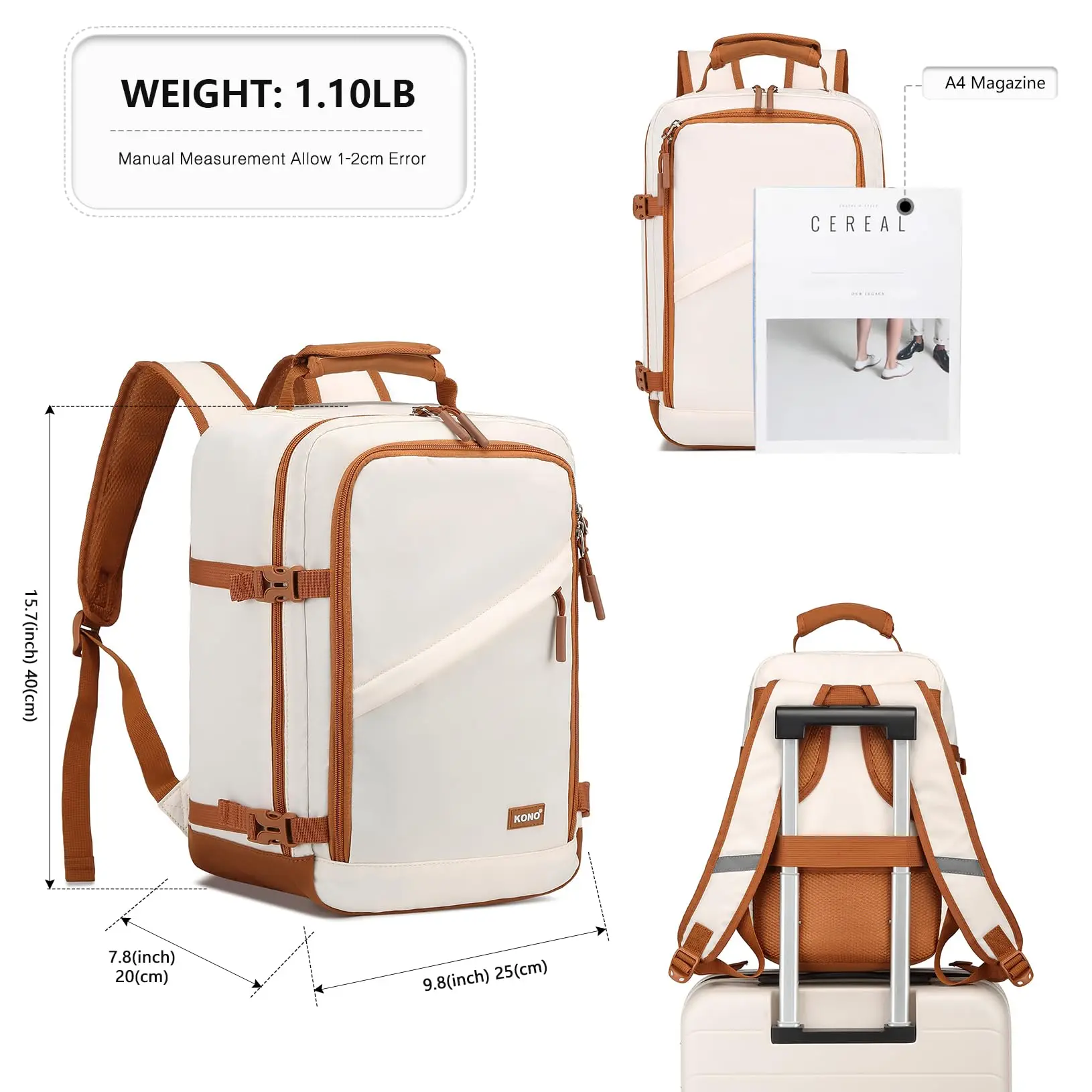
When working within budget constraints, prioritize features based on your most common use case rather than attempting to find a pack that excels at everything. A well-chosen pack that perfectly serves your primary needs will provide greater satisfaction than one with numerous features you rarely use.
Before purchasing, test the fit whenever possible—even well-reviewed backpacks may not match your specific body proportions. Pay particular attention to strap placement, back panel comfort, and weight distribution when loaded.
For those who appreciate traditional design with modern functionality, leather rucksacks with roll-top elements offer appealing options that blend heritage aesthetics with practical performance.
What About Price? Balancing Investment & Quality
Roll-top backpacks span a wide price range, with meaningful differences between tiers. Understanding what to expect at different price points helps make informed investments:
Entry-Level ($70-120)
- Basic roll-top functionality with simpler closure systems
- Limited waterproofing (often water-resistant rather than waterproof)
- Basic comfort features with minimal padding
- Simpler organization systems
- Less durable materials and construction
Mid-Range ($120-220)
- Improved weather protection with better materials and seam sealing
- Enhanced comfort with contoured straps and ventilated back panels
- More thoughtful organization with dedicated laptop compartments
- Better hardware quality and durability
- More refined aesthetic options
Premium ($220+)
- Superior materials with lifetime durability expectations
- Comprehensive weather protection systems
- Advanced ergonomics with load-distribution technology
- Sophisticated organization tailored to specific use cases
- Distinctive design elements and premium aesthetics
When evaluating value beyond price, consider:
– Warranty terms – Longer warranties often indicate manufacturer confidence in durability
– Material specifications – Look for detailed information rather than vague descriptions
– Construction details – Reinforced stress points, quality hardware, and thoughtful design elements
– User reviews focusing on longevity – Recent reviews show initial impressions; older reviews demonstrate durability
The cost-per-use calculation often justifies investing in higher-quality options for items used daily. A $200 backpack used 200 days per year for 3 years costs just 33 cents per use—far less than replacing a cheaper bag multiple times during the same period.
Expert Tips for Maximizing Roll Top Performance
Once you’ve selected the perfect roll-top backpack, these expert tips will help you maximize its performance and longevity:
Master proper rolling technique – For maximum waterproofing, fold the sides inward before rolling the top down at least 3-4 times. This creates multiple layers of protection against water entry.
Distribute weight properly – Pack heavier items close to your back and centered vertically in the pack. This improves balance and reduces strain on your shoulders.
Clean appropriate to materials – Most technical fabrics benefit from gentle cleaning with mild soap and thorough rinsing. Avoid harsh detergents that can damage waterproof coatings.
Maintain hardware regularly – Apply silicone lubricant to sticky buckles and zippers. Remove grit and debris from hook-and-loop fasteners to maintain their effectiveness.
Store properly when not in use – Store partially filled or with light stuffing to maintain shape. Avoid prolonged compression that can damage padding and support structures.
Break in stiff materials gradually – New waterproof materials often feel stiff initially. Regular use will increase flexibility without compromising protection.
Adapt packing strategy seasonally – In rainy seasons, use internal organization pouches for additional protection of sensitive items. In dry conditions, external pockets provide quicker access.
Use compression straps effectively – Even when not fully loaded, secure compression straps to stabilize contents and maintain a comfortable carry profile.
These practices not only enhance your daily experience but also extend the lifespan of your investment, ensuring years of dependable performance from your roll-top backpack.
Conclusion: Finding Your Perfect Roll Top Backpack
Finding the ideal roll-top backpack comes down to honestly assessing your needs and matching them to the right features. The perfect pack balances weather protection, organization, comfort, and style in proportions that align with your specific usage patterns.
Remember that the most expensive or feature-rich option isn’t necessarily the best for you—the right roll-top backpack is one that solves your particular carrying challenges while providing reliability and comfort. Focus on quality construction in the areas most important to your use case, whether that’s superior waterproofing for bike commuting, exceptional organization for daily work use, or versatile capacity management for varying loads.
Before finalizing your decision, ask yourself:
– Does this pack protect what I need it to protect?
– Is it comfortable enough for my typical carrying duration?
– Does the organization system match how I access my gear?
– Will the aesthetic work across the environments where I’ll use it?
– Does the quality justify the investment based on how often I’ll use it?
Roll-top backpacks offer a compelling blend of adaptability, protection, and style that has earned them a dedicated following. By focusing on the features that truly matter for your specific needs, you’ll find a pack that serves you reliably for years to come—making it not just a purchase, but a worthwhile investment in your daily comfort and efficiency.

